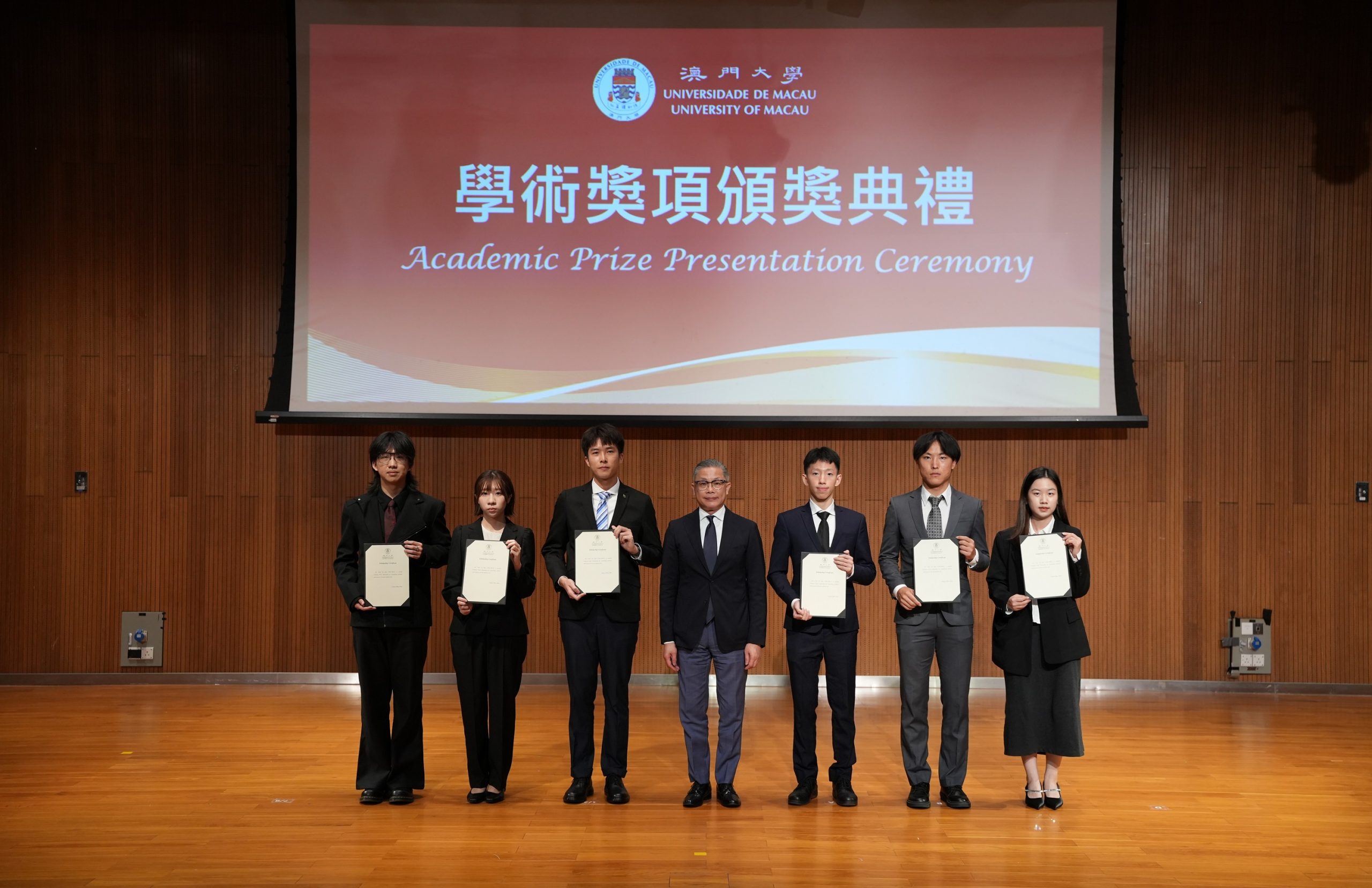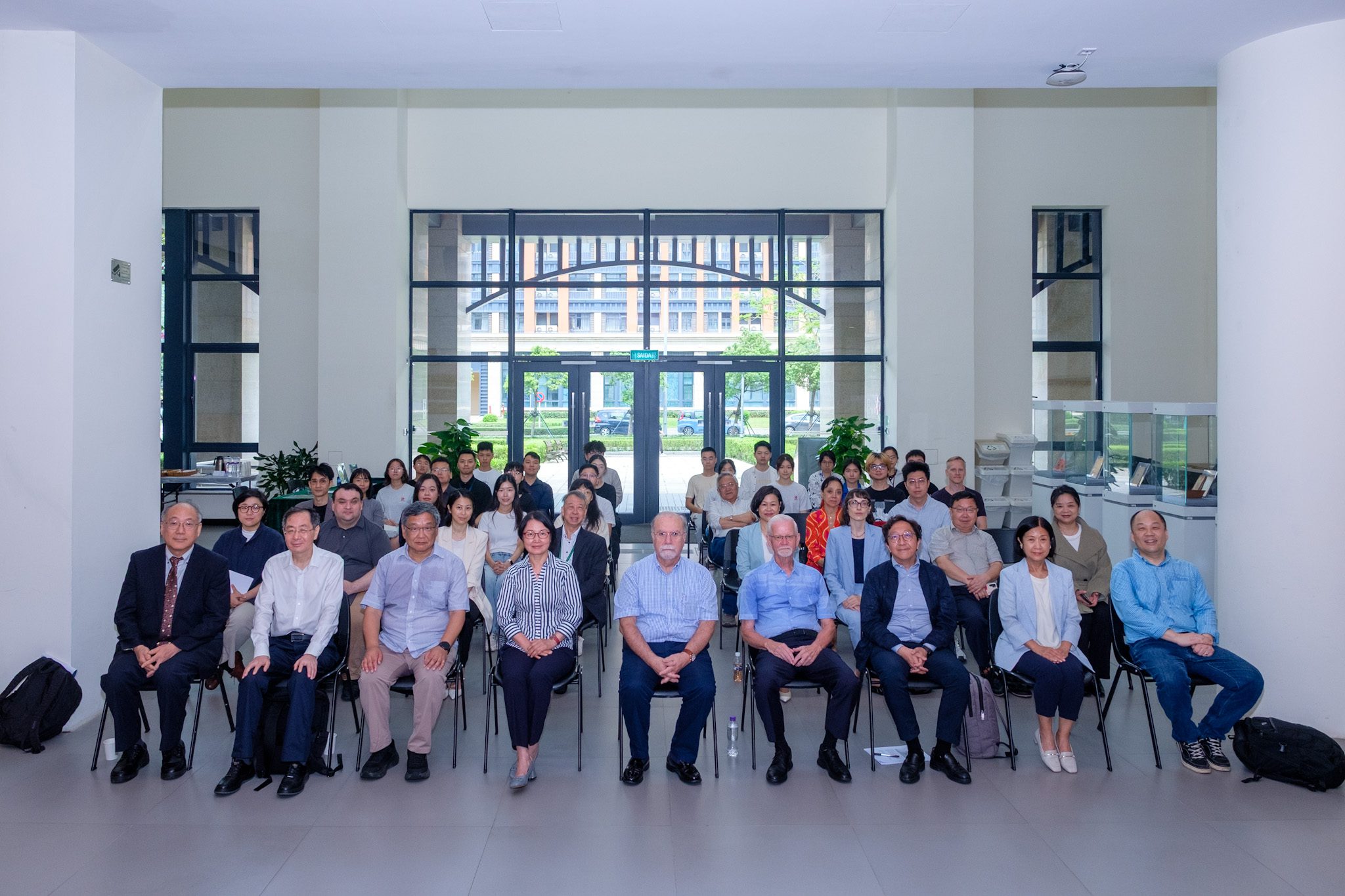News Express: ‘Regarding Books’ exhibition opens at UM, showcases charm of books
jasonleong2025-05-23T16:50:40+08:00

“看‧書”藝術展覽開幕
The ‘Regarding Books’ Exhibition
“看‧書”藝術展覽澳大開幕 重現書籍視覺藝術魅力
由澳門大學人文學院藝術與設計系和該校伍宜孫圖書館合辦的“看‧書”藝術展覽今(23)日開幕,展出澳大圖書館珍藏的50多件中西古籍,讓觀眾重新發現書籍的多重魅力,並探討在數位時代,紙質圖書的獨特價值與文化意義。
開幕式上,澳大校長宋永華致辭表示,是次展覽不僅是一場視覺盛宴,更是對傳統文化和閱讀方式的一次深刻反思。在數位時代,人們更需要重新審視紙質書的價值,並通過藝術的形式,讓更多人愛上閱讀,感受文化的魅力。
澳大人文學院藝術與設計系主任李軍指出,漢字的象形性決定了它是視覺優先性的文字,故展覽更強調書籍的視覺呈現。現場更以紙香配墨韻,讓大眾以多重感觀感受圖書字體、版式、插圖、裝幀、乃至看書人的塗鴉和批注的藝術與文化魅力。
澳大圖書館館長徐鴻表示,展覽的亮點之一是一面由《萬有文庫》多卷叢書構成的書牆。這套叢書曾以輕便的形式將知識與文化傳播到千家萬戶,令人感慨其為文化普及所作出的卓越貢獻。然而,書牆也引發人們對未來的思考:在數位時代,紙質圖書的角色以及意義是否正在改變。
是次展覽收錄了多件圖書、地圖、手稿等的珍貴古籍,其中包括中國現存唯一的歐幾里得《幾何原本》搖籃本,1491年版;公元1491年為中國明朝弘治年間,展覽亦同時展出明朝弘治年間刻本古籍《新編纂註資治通鑑外紀義》,這本古籍入選了第二批《國家珍貴古籍名錄》。
出席開幕式的嘉賓還包括中央人民政府駐澳門特別行政區聯絡辦公室文宣部部長萬速成、澳門特別行政區政府文化局代局長蔡健龍、澳大副校長馬許願、橫琴粵澳深度合作區民生事務局局長馮方丹、澳門特別行政區政府教育及青年發展局高等教育廳廳長許嘉路、廣東省文化和旅遊廳一級調研員李錄春、香港特別行政區政府康樂及文化事務署代表兼香港文化博物館總館長林國輝、美高梅文化藝術高級副總裁郭蕙心等。
展覽位於澳大伍宜孫圖書館(E2)一樓展覽廳,開放時間為上午10時至下午7時,免費入場,公眾假期照常開放,展期至8月31日,現場提供定點及預約導賞服務。詳情可瀏覽澳大藝術博物館網站https://library.um.edu.mo/museum/zh/。
欲瀏覽官網版可登入以下連結:
https://www.um.edu.mo/zh-hant/news-and-press-releases/press-release/detail/61211/
‘Regarding Books’ exhibition opens at UM, showcases charm of books
The exhibition ‘Regarding Books’, jointly organised by the University of Macau (UM) Library and the Department of Arts and Design in the Faculty of Arts and Humanities, opened today (23 May). The exhibition showcases over 50 Chinese and Western rare books selected from the UM Library’s collection, allowing visitors to discover the charm of books and explore the unique value and cultural significance of printed books in the digital age.
Speaking at the opening ceremony, Yonghua Song, rector of UM, said that the exhibition offers visitors both a visual feast and an opportunity to reflect on traditional culture and reading practices. Li Jun, head of the Department of Arts and Design, said that the exhibition allows visitors to appreciate books from various aspects, including their typography, layout, illustrations, binding, and marginal notes. Xu Hong, librarian of the UM Library, expressed hope that the exhibition will stimulate discussion about the evolving role and significance of printed books in the digital age.
The exhibition is taking place in the Exhibition Hall on the first floor of the UM Wu Yee Sun Library (E2). It is open daily from 10:00am to 7:00pm until 31 August, including public holidays. Admission to the exhibition is free, and guided tours are available on site and by appointment. For more details, please visit the UM Museum of Art website: https://library.um.edu.mo/museum/en/.
To read the news on UM’s official website, please visit the following link:
https://www.um.edu.mo/news-and-press-releases/press-release/detail/61211/








